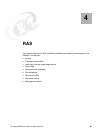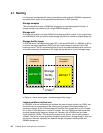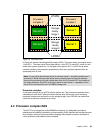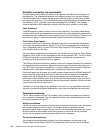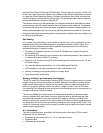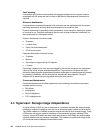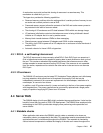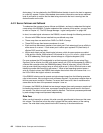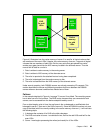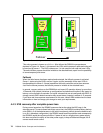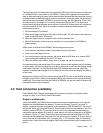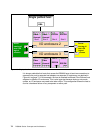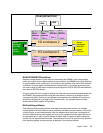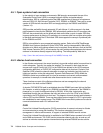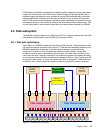68 DS8000 Series: Concepts and Architecture
disk system. It is also checked by the DS8000 before the data is sent to the host in response
to a read I/O request. Further, the metadata also contains information used as an additional
level of verification to confirm that the data being returned to the host is coming from the
desired location on the disk.
4.4.2 Server failover and failback
To understand the process of server failover and failback, we have to understand the logical
construction of the DS8000. To better understand the contents of this section, you may want
to refer to Chapter 10, “The DS Storage Manager - logical configuration” on page 189.
In short, to create logical volumes on the DS8000, we work through the following constructs:
We start with DDMs that are installed into pre-defined array sites.
These array sites are used to form RAID-5 or RAID-10 arrays.
These RAID arrays then become members of a rank.
Each rank then becomes a member of an extent pool. Each extent pool has an affinity to
either server 0 or server 1. Each extent pool is either open systems FB (fixed block) or
zSeries CKD (count key data).
Within each extent pool we create logical volumes, which for open systems are called
LUNs and for zSeries, 3390 volumes. LUN stands for
logical unit number, which is used
for SCSI addressing. Each logical volume belongs to a logical subsystem (LSS).
For open systems the LSS membership is not that important (unless you are using Copy
Services), but for zSeries, the LSS is the logical control unit (LCU) which equates to a 3990 (a
z/Series disk controller which the DS8000 emulates). What is important, is that LSSs that
have an even identifying number have an affinity with server 0, while LSSs that have an odd
identifying number have an affinity with server 1. When a host operating system issues a
write to a logical volume, the DS8000 host adapter directs that write to the server that
owns
the LSS of which that logical volume is a member.
If the DS8000 is being used to operate a single storage image then the following examples
refer to two servers, one running on each processor complex. If a processor complex were to
fail then one server would fail. Likewise, if a server itself were to fail, then it would have the
same effect as the loss of the processor complex it runs on.
If, however, the DS8000 is divided into two storage images, then each processor complex will
be hosting two servers. In this case, a processor complex failure would result in the loss of
two servers. The effect on each server would be identical. The failover processes performed
by each storage image would proceed independently.
Data flow
When a write is issued to a volume, this write normally gets directed to the server that owns
this volume. The data flow is that the write is placed into the cache memory of the owning
server. The write data is also placed into the NVS memory of the alternate server.




